This year’s elk hunt with my twin sister, Tracy, in the Colorado high country was one for the books. It started with a scouting trip just a week before opening day in the heart of the San Juan Mountains, which quickly turned into a blizzard. Almost a foot of snow blanketed the slopes, sending most of the elk scurrying for lower elevations. We’d originally planned to hunt above tree line but the fresh tracks told a different story – all were leading south, down deep into the timbers. So, we adjusted our plans, deciding to focus on slightly lower elevations where the elk seemed to be seeking refuge.
As we continued scouting, we unexpectedly found ourselves right in the middle of a herd. We were tucked downwind, only about 15 yards from the elk, who were blissfully unaware of our presence. Tracy had just ducked under a huge fallen log, but as she started to stand, her pack snagged on a branch. She froze in the most awkward position – resembling a breakdancing kangaroo pose. For 15 long minutes, she held this uncomfortable pose as the elk continued feeding nearby. The wind held steady, keeping us undetected, and eventually, the herd drifted away. As we were about to leave, an elk bugle echoed through the forest, which is a rare and exciting sound for second rifle season. We couldn’t wait for opening day to try to find that herd again.
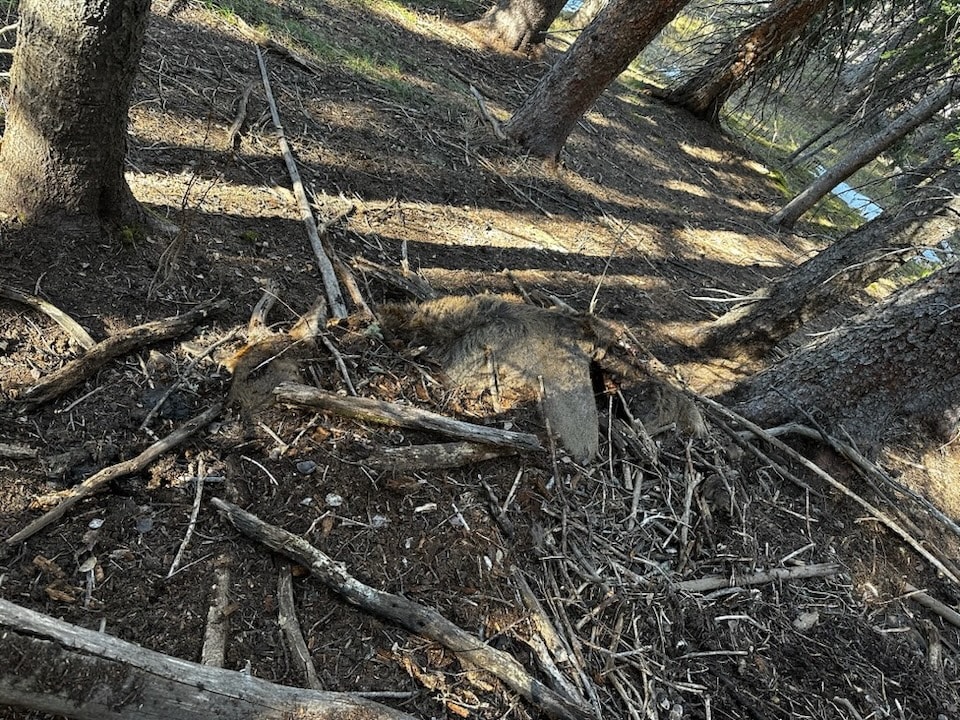
At dawn on opening day, we split up, each heading to different ridges in hopes of locating the elk. Tracy soon stumbled upon a surprising discovery: a massive bear sprawled out, sound asleep. As she crept closer, the bear caught her scent and lumbered off, revealing a hidden treasure – a cow elk carcass buried right beneath where it had been napping. The bear had likely taken down the elk and stashed it for future meals.
Moving back up to the ridge, she spotted more activity below. Magpies and crows had already begun feasting on the carcass, and even a pine marten was sneaking bites. She knew then that the elk herd had long since cleared out, spooked by the presence of the bear. No other elk showed themselves that day, which seemed to be the trend in our familiar hunting grounds, meaning bears everywhere, where we’d rarely see them during elk season in previous years.
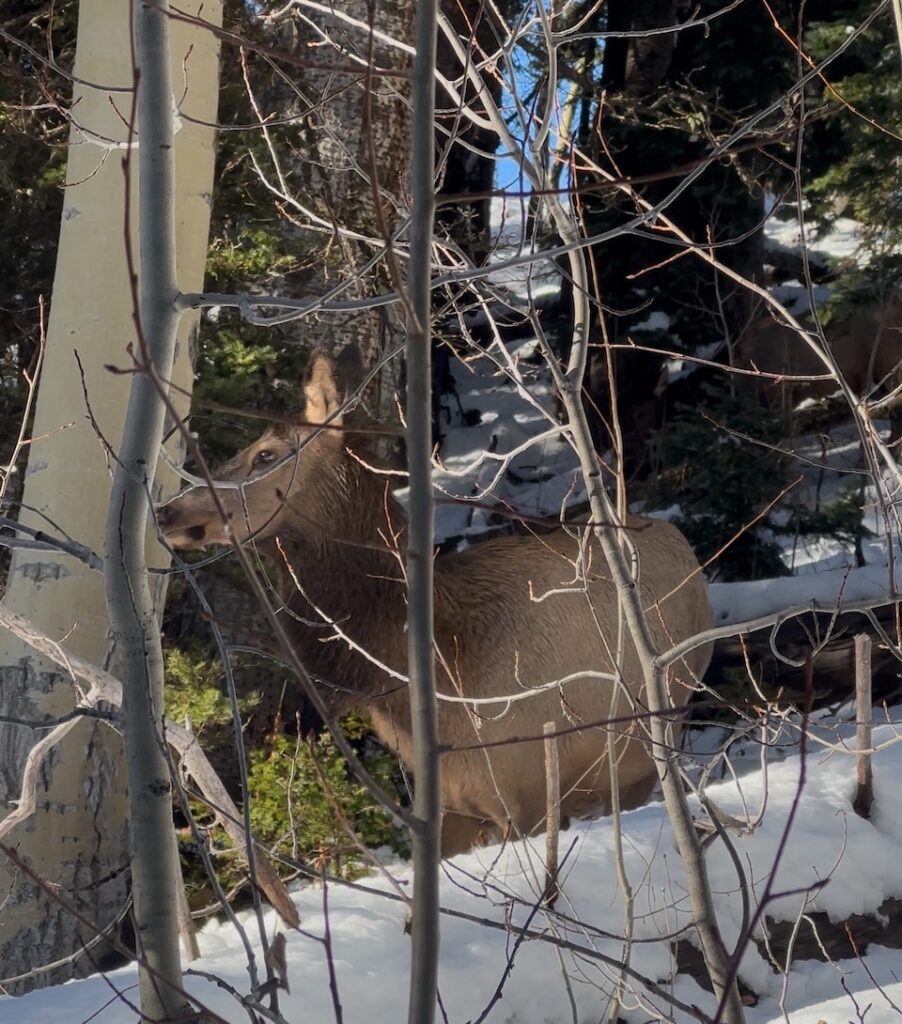
The next day, Tracy and I decided to try a different area. The pressure was on, as a new storm rolled in, one that promised to be big and would likely cut off access to the hunting grounds. If we harvested an elk, we’d need to pack it out fast before the storm hit. As we worked our way along a ridge, we heard distant cow calls and the bugle of a bull from a meadow just to the west. Moving closer, we spotted two bulls charging across the meadow, one in hot pursuit of the other. Elk filled the meadow, and without hesitation, Tracy and I both took aim, each selecting a different bull.

Chaos erupted as the herd scattered, leaving two bulls down – meat that would feed both our families for the year. We were both using .270’s and shooting the Fiocchi 130grain Swift Scirocco BT, which has been one of our favorite elk hunting rounds and has proven both successful and accurate for both of us and ensured a clean and humane shot.
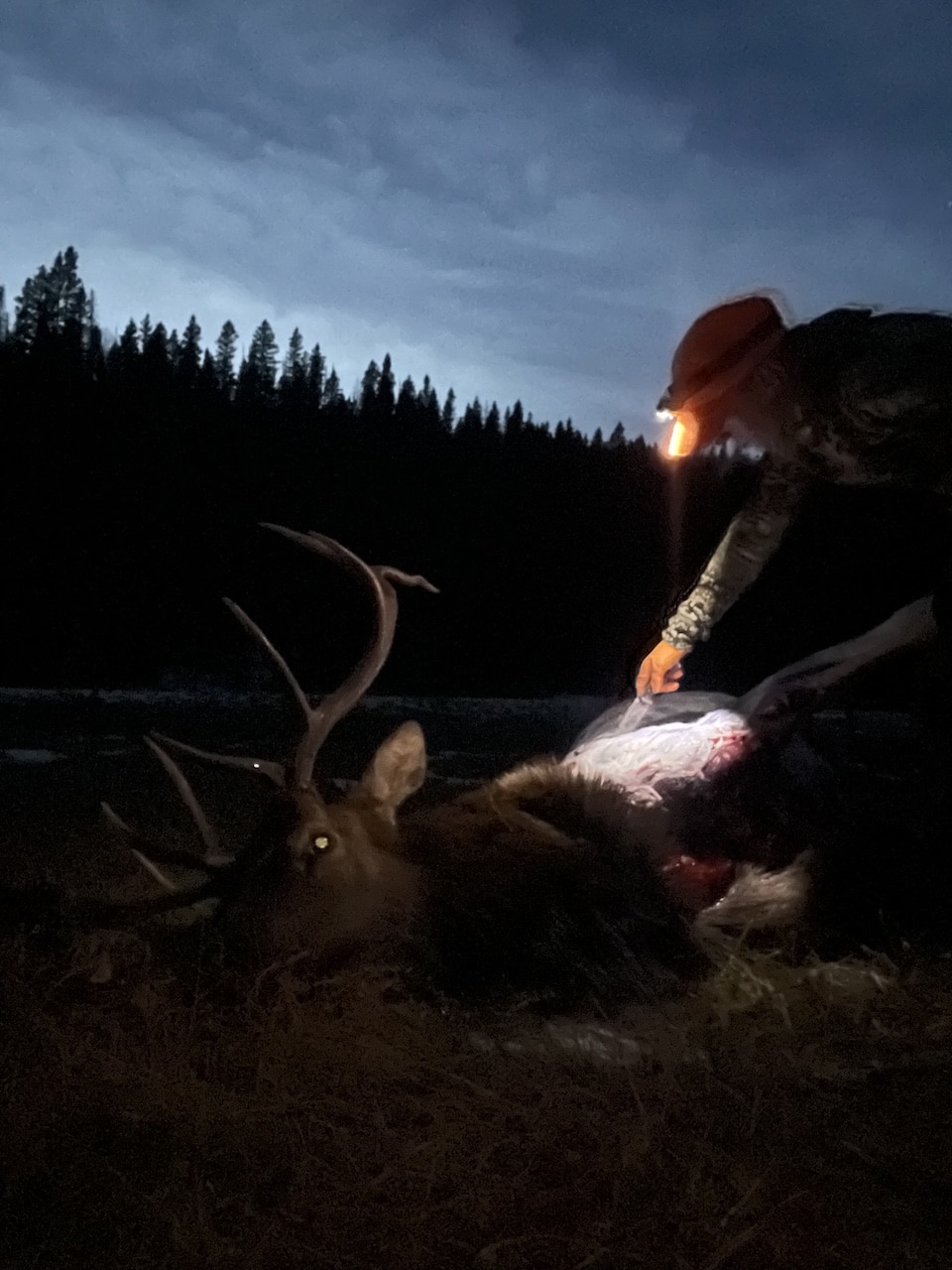
Not a word passed between us; we knew the task ahead. The sun was dipping low, so we quickly got to work gutting, skinning and taking off a hind leg each to carry out on that first haul. With temperatures set to drop to 25°F overnight, we knew the meat would keep until we could return at first light to finish packing it out.
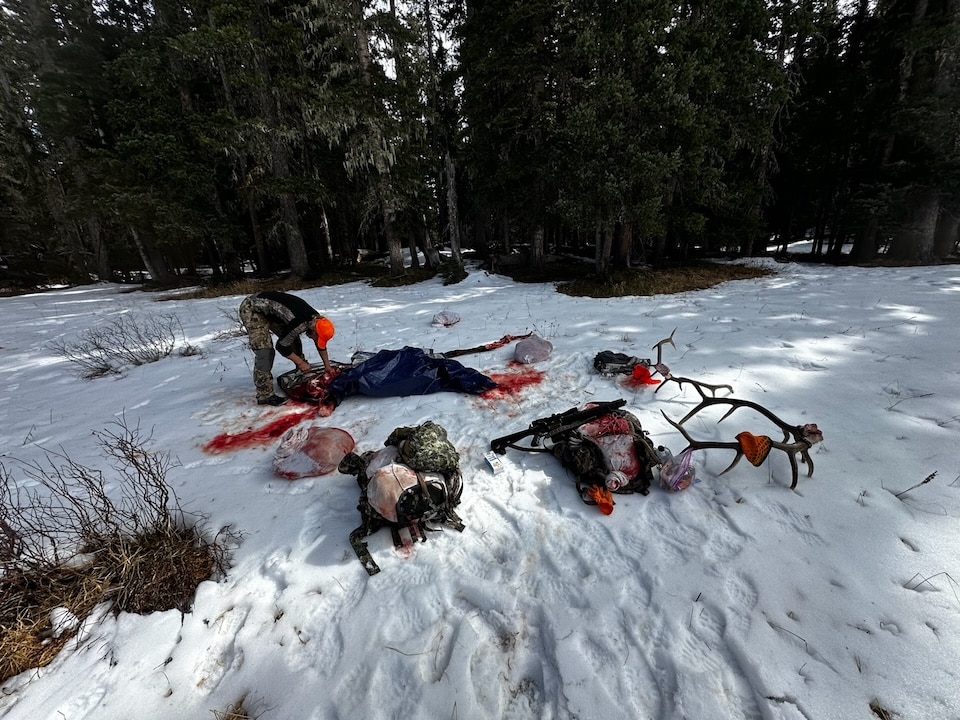
After a sleepless night, we hit the trail before dawn, loaded with gear and ready to tackle the task. We started with Lanny’s bull, deboning it and hanging the meat to debone in an attempt to lighten our load. The steep, rugged terrain meant we’d take only what we’d use, leaving the bones behind to save weight. Tracy and I would carry out approx. 250-to-300 pounds of meat for each animal so about 500-to-600 pounds total. With the first bull packed up, we moved on to Tracy’s. The snow on the ground made a perfect, natural chiller as we worked through the each section of the animal aka the quarters.
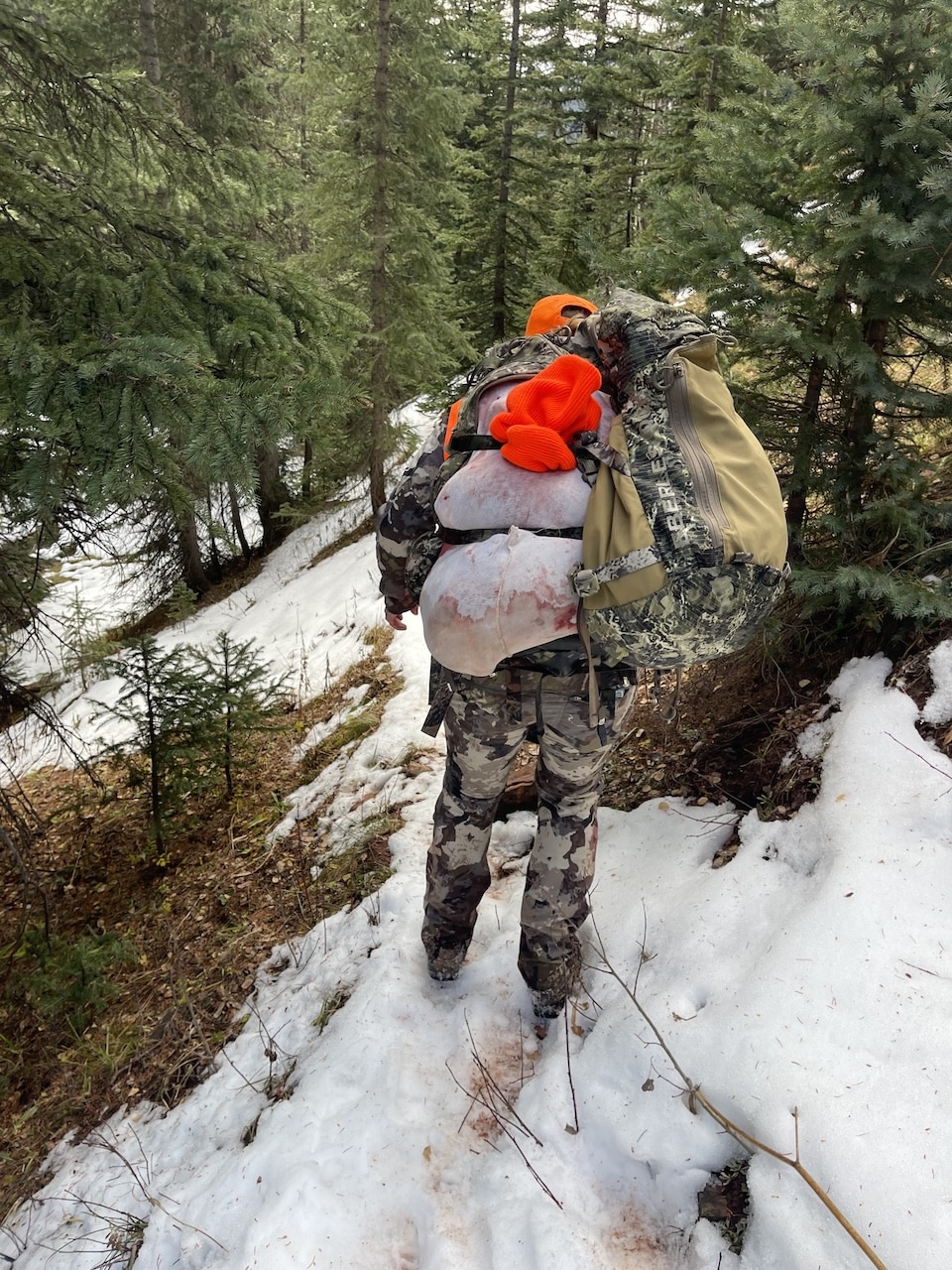
As we finally strapped on our overloaded packs, the storm clouds gathered, painting the sky an ominous gray. It came time to bid farewell to our favorite hunting grounds for the season, knowing they’d soon be buried in snow until the spring thaw. The pack-out felt punishing; the weight of the meat and the elevation made every step a challenge. But luck was on our side—it was all downhill, even if it steeper than most ski runs.
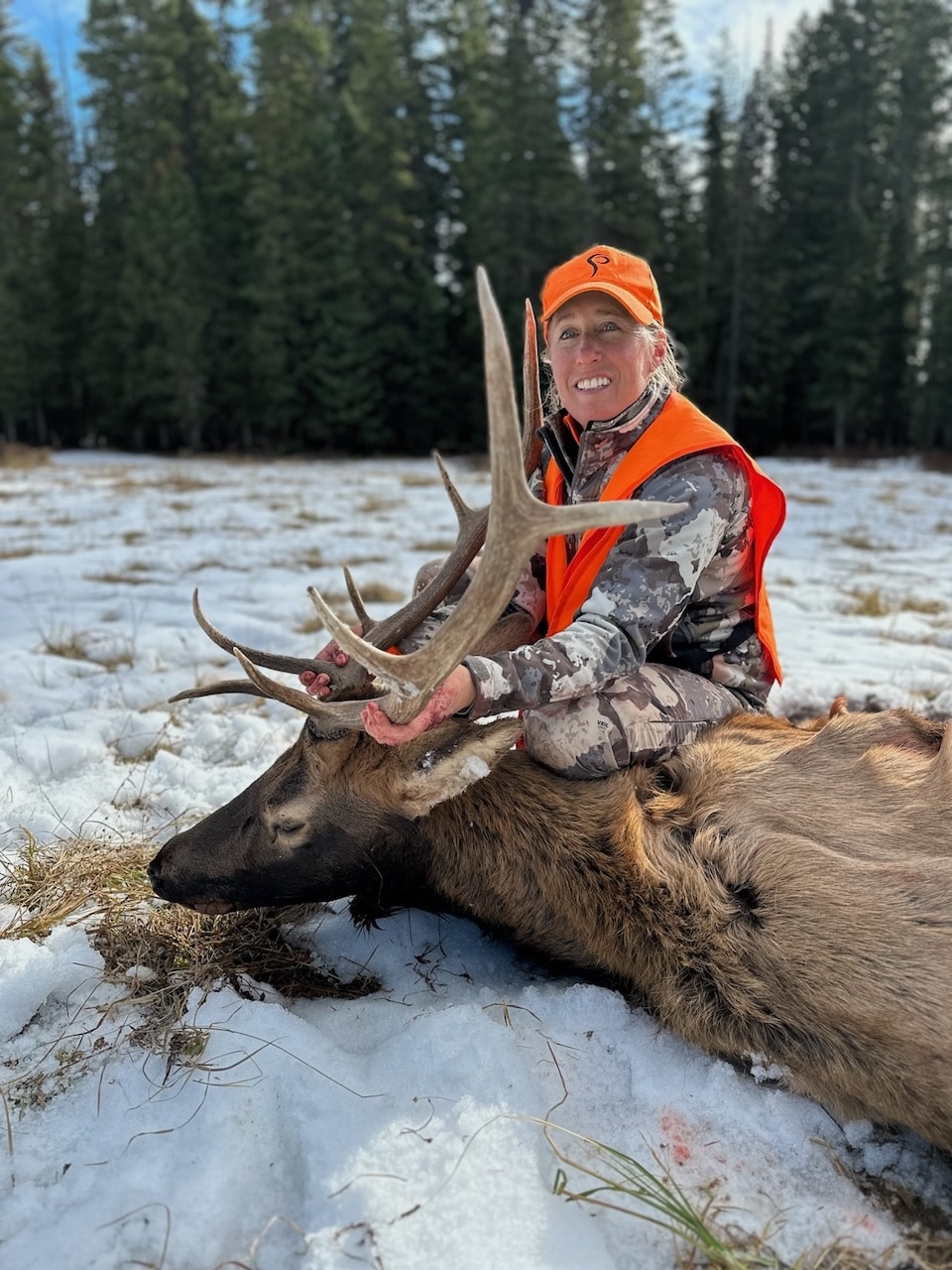
By the time we reached the trucks, darkness set in and flurries began to fall. Hunters streamed out of the mountains, racing the coming storm that promised to close down the mountains and the forest service road until spring with a heavy layer of snow. Our muscles ached, but the relief was sweet as we loaded up, knowing we’d made it out just in time.
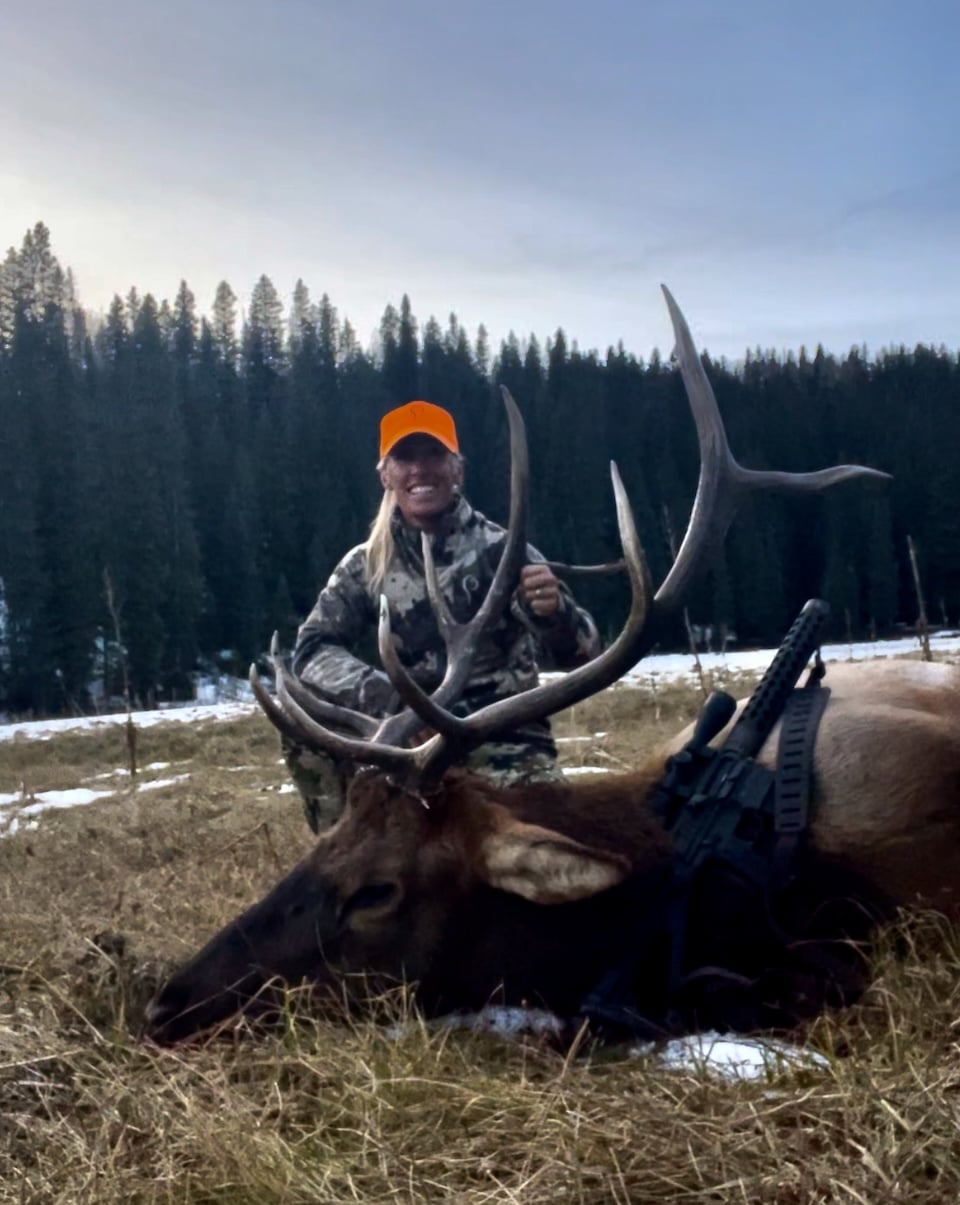
Bad weather, hungry predators and grueling miles – it had been a hunt of resilience, and one we’d never forget.
Lanny Barnes is a three-time Olympian in Biathlon, as well as a National & World Champion in several shooting disciplines. She is currently teaching courses to military, law enforcement and competitive shooters on physiological and psychological aspects of shooting and is the director of Commercial Sales for HIVIZ Sights. Lanny and her twin sister spend much of their free time traveling around to schools, 4-H clubs, Boys & Girls Clubs, etc., talking to them about following their dreams, setting goals, and leading a healthy active lifestyle. Taking wounded vets and terminally ill kids on hunts through Freedom Hunters and OE4A is also one of Lanny's passions. View all posts by Lanny Barnes